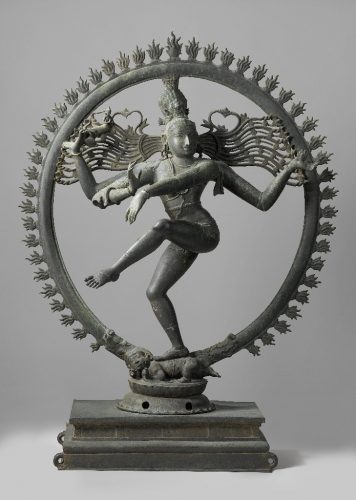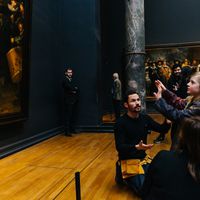Symposium: "Collecting Asian Art in the Western World" | The Netherlands
 The Asian Art Society in the Netherlands (VVAK) was founded in June 1918 and is currently celebrating its 100th anniversary. In this context, it is organising an international symposium entitled Collecting Asian Art in the Western World: Past, Present and Future. It will be held on 23 June at the Rijksmuseum, Amsterdam, the home of the VVAK's collection, of which alternating highlights are displayed in the museum's Asian Pavilion throughout the year.
Further to VVAK members and experts from several universities and museums, some ASEMUS member museums, including the National Museum of World Cultures (The Netherlands), Museum Rietberg (Zürich, Switzerland) and Musée Guimet (Paris, France) will be represented.
The Asian Art Society in the Netherlands (VVAK) was founded in June 1918 and is currently celebrating its 100th anniversary. In this context, it is organising an international symposium entitled Collecting Asian Art in the Western World: Past, Present and Future. It will be held on 23 June at the Rijksmuseum, Amsterdam, the home of the VVAK's collection, of which alternating highlights are displayed in the museum's Asian Pavilion throughout the year.
Further to VVAK members and experts from several universities and museums, some ASEMUS member museums, including the National Museum of World Cultures (The Netherlands), Museum Rietberg (Zürich, Switzerland) and Musée Guimet (Paris, France) will be represented.
Key themes
The main themes addressed throughout the international symposium Collecting Asian Art in the Western World: Past, Present and Future are as follows:- Private collections and public museums: Private art collectors and their gifts are at the foundation of most European and American art museums. This also applies to the field of Asian art, in the East as well as in the West. Especially from the late nineteenth century onwards connoisseurs have created outstanding collections, individually and collectively via societies. Most of the major collections of Asian art originally started as private initiatives and later developed into museums.
- VVAK and its 100th anniversary: The Vereniging van Vrienden der Aziatische Kunst (VVAK), or Asian Art Society in the Netherlands, was founded in 1918 as an entirely private initiative. The collection of the VVAK distinguishes itself from the collections of the various Dutch ethnographical museums by focusing on high-quality art works only. The VVAK does not collect any form of export art made for the West. The growing collection was initially shown at the Stedelijk Museum in Amsterdam before it was moved to the Rijksmuseum in 1952, where it has been on loan ever since. The vast majority of the art objects displayed in the Asian Pavilion of the Rijksmuseum is the property of the VVAK.
- Asian art societies in Europe and America: One of the earliest examples of a collectors’ society is the Bataviaasch Genootschap van Kunsten en Wetenschappen (Batavia Society for Arts and Science) in Batavia, now Jakarta, that was founded as early as 1778. Its collection is divided between the National Museum in Jakarta and the Museum Volkenkunde in Leiden. The English followed the Dutch with the foundation of the Oriental Ceramic Society in 1921, where after Germany founded the Gesellschaft für Ostasiatische Kunst in 1926 (East Asian Art Society). It was only after the Second World War that the first collections were initiated in the United States: the Society for Asian Art in San Francisco and the Asia Society in New York City, both in 1958. They both resulted in the foundation of museums and their members collectively assembled excellent art objects to exhibit publicly.
- European founders of Asian museums: One of the first museums for Asian art in Europe was initiated by the French connoisseur Emile Guimet and was based on his interest for ancient religions. The collecting policy of the VVAK was strongly guided by its co-founder and first chairman, the banker Herman Karel Westendorp, who personally bought important pieces for the society’s collection in the countries of origin in the 1930’s. Shortly after 1945, the Rietberg Museum was founded on the vast collections of the German-Swiss banker Eduard von der Heydt.
- Collection policies: past, present and future: The history of collecting can be viewed through a variety of paradigms, as keynote speaker prof. John Guy argues. He will analyse historical, cultural, political and ethnic framing of collecting Asian art, both in private and public arenas. The heyday of collecting non-western art is over now. Today, the export and import of art from other continents is strictly regulated. The provenance of each object must be checked on the (legal) circumstances of its acquisition and origin. At the same time, museums reconsider ways to exhibit Asian art and heritage, protecting it while at the same time trying to attract a broader and younger audience.
Registration and further information
Registration for the international symposium Collecting Asian Art in the Western World - Past, Present and Future is now open. For further information and registration, please visit https://www.vvak.nl/en/agenda/1970/save-the-date-vvak-lustrum-symposium-asian-art-private-collections-and-their-value-for-public-museums/Similar content
posted on
12 Apr 2013
posted on
18 May 2013
from - to
12 Apr 2016 - 09 Oct 2016
posted on
30 Nov 2011
posted on
27 Nov 2017
posted on
06 Jul 2011




